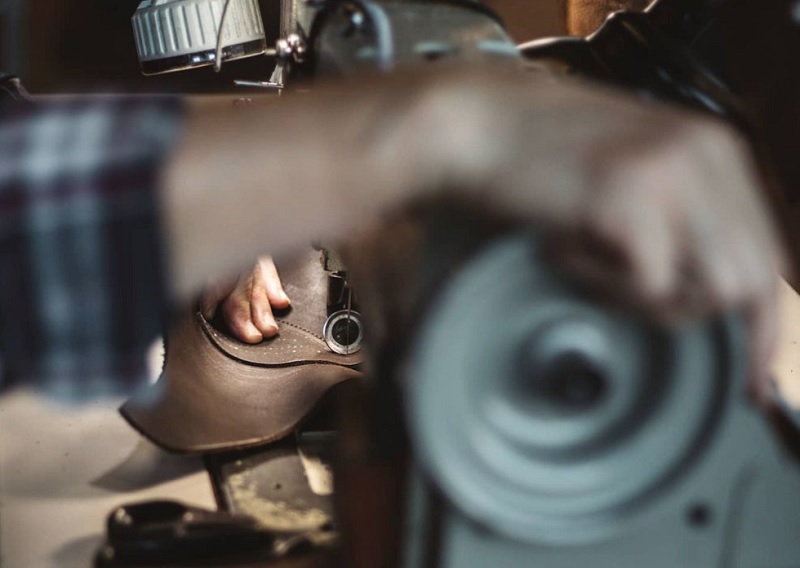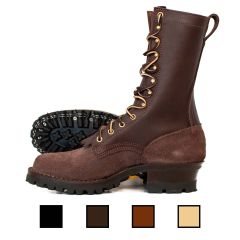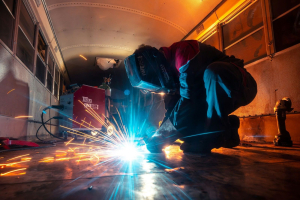Is Your Boot Size The Same As Your Shoe Size?

Boot size and shoe size are funny, in that they are almost all relative. The size is given in a numerical value but what that value pertains to...is something else altogether! Your boot size will often not be the same as your shoe size, though for some people it will be.
There are a few reasons for this.
Partially, it has to do with the way that sizes are measured. Partially it has to do with the lasts that shoemakers use to make shoes. Boot construction can also make a difference here too.
Why are your shoe size and work boot size so different? Let's talk about a few reasons why that is.
Shoe Sizes And Lasts

Shoe sizes and boot sizes are...a little weird.
Pant sizes by contrast are downright logical. If the circumference of your waist is 38 inches, you wear a size 38. It makes a lot of sense!
American and British shoe sizes are based on the length of the last (the mold that the shoe is made around) in barleycorns, which is ⅓". The size is determined by measuring the length of the last, multiplying it by 3, then subtracting 25 for men or 23 for women. It would look like this:
The difference between UK and US shoe sizes is that US sizes start at a size 1, but UK sizes start at a size 0. Therefore, US size 10 is UK size 9. Generally, the length of the foot would be 2 barleycorns shorter than the length of the last.
Some bootmakers and shoemakers use a size corresponding to Brannock device measurements, which are related to the US/UK sizing conventions but are based on the size of the foot.
A Brannock size will typically be about a half-size shorter (about 2 barleycorns) than the conventional sizing scheme. As mentioned, the classic sizes are based on the length of the last rather than the length of the foot.
Now, why does ANY of that matter at all?!
Because a bootmaker or shoemaker may use Brannock sizes, or they may use traditional sizes. A traditional size will be a little bit bigger than your foot, a Brannock size will be the size of your foot.
And that may not be something they tell you! If you notice a boot maker tells you how to be fit that usually will give you an idea of how their sizing conventions work.
So if you have to buy, say, a size 13 in Adidas sneakers but wear a size 11.5 in boots...that's because the lasts used by one company are radically different than those used by the other.
Boot Construction Also Matters

Another aspect that can impact size and fit is the construction of the shoes or boots themselves.
So, most shoes are made by stitching an upper, insole and midsole together, and then gluing it directly to the outsole. A lot of boots are made that way too.
A pair of boots that's made using a Goodyear welt stitches the upper, insole, midsole and outsole together, with a strip of material running outside the upper that's stitched to the mid and out soles.
The Goodyear welt is common with both casual and working footwear.
Another construction method for work boots and casual or heritage boots is stitchdown construction, where the upper is flanged out on the top of the midsole, and the upper, insole, midsole and outsole are all hand-stitched together.
Blake construction, typically only used for dress shoes, directly stitches the insole and upper to the outsole.
Now, why do those things matter?
Blake construction in dress shoes and stitchdown construction in work boots will tend to have a little more room all the way around the toe box. A stitchdown boot can have up to an extra ¼" of room (possibly more) on all sides.
What that can mean is that a size 10 in a stitchdown boot is more like a 9.5 if a similar boot is made using a Goodyear welt.
Cemented construction and Blake stitching can also leave a bit more room in the toe box, or possibly less if the shoemaker or bootmaker happens to use particularly small lasts, which tends to be common in athletic and dress shoes.
So, you might notice that some boots fit true to your size, or may be larger or smaller depending on the construction method.
The Best Way To Get Boots That Fit Are To Get Fitted Boots
If you want to make sure that your work boots are going to fit perfectly, the only way to guarantee that happens is try boots on in stores or to get made to order boots that use the measurements of your actual feet.
After all, a pair of boots or shoes that are made to the measurements of your foot are going to fit better than a pair of boots that are made to fit any feet in a given range of dimensions.
Having boots or shoes that are custom-made for your feet may require a bit more waiting than just ordering them online or buying them from a store...but people who do always get more than their money's worth in comfort and quality of fit.
If you want to get a pair of work boots or heritage boots that fit perfectly, function perfectly and look darn good in the process...investing in a pair of made-to-order, handmade boots will get you exactly what you want.







Validate your login